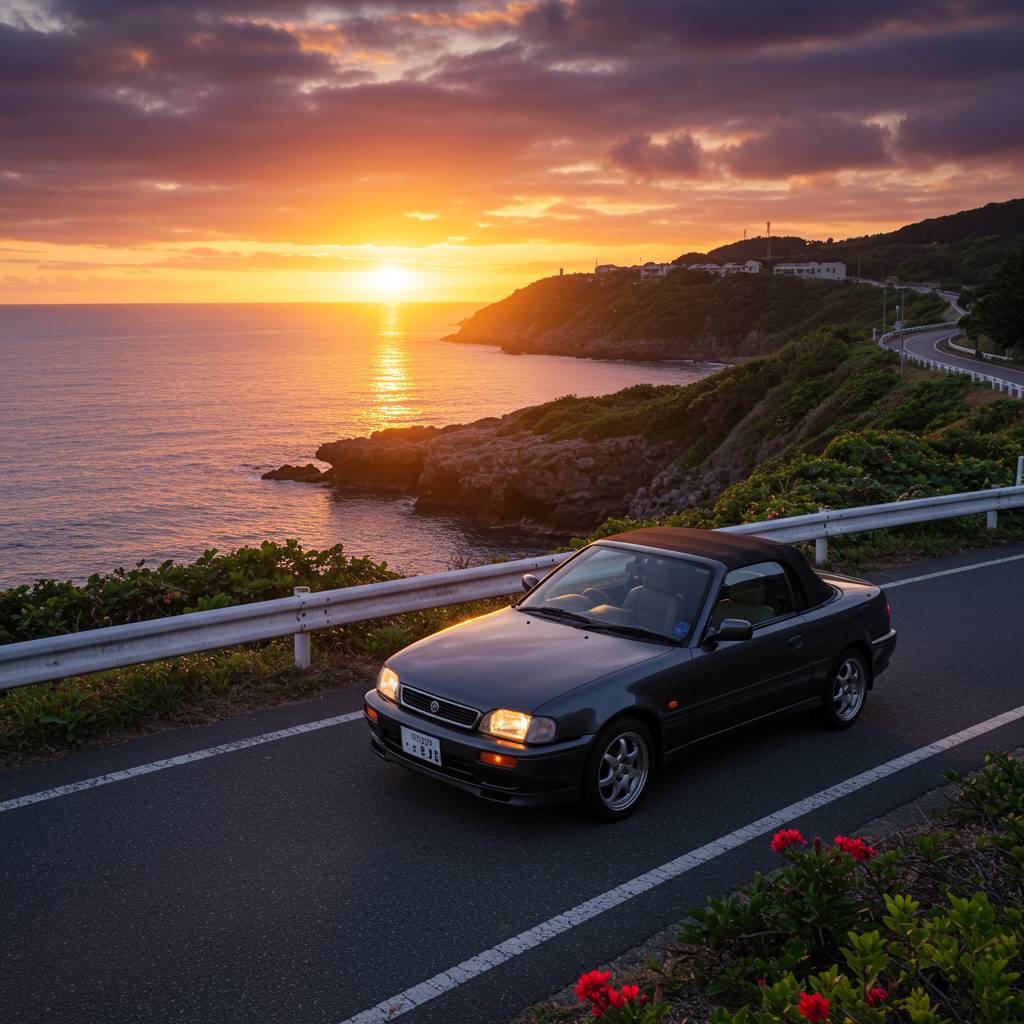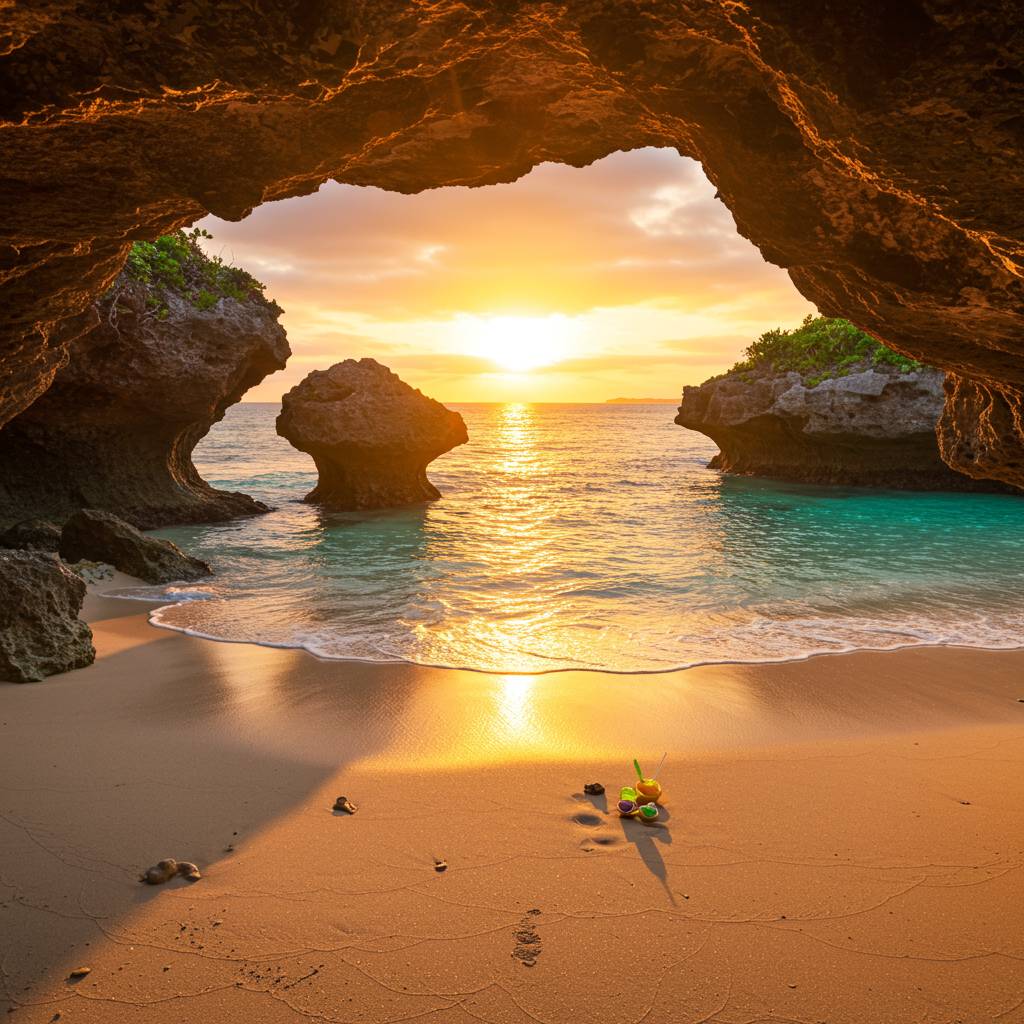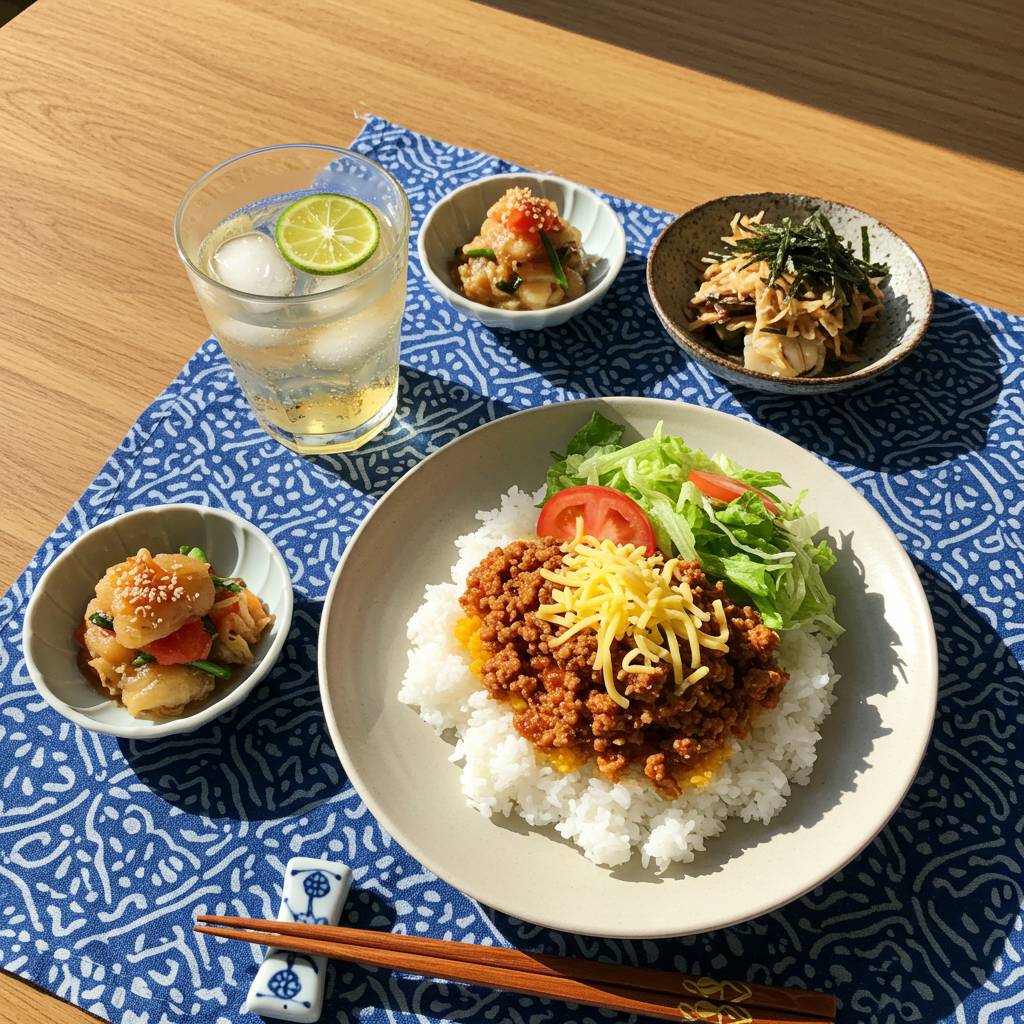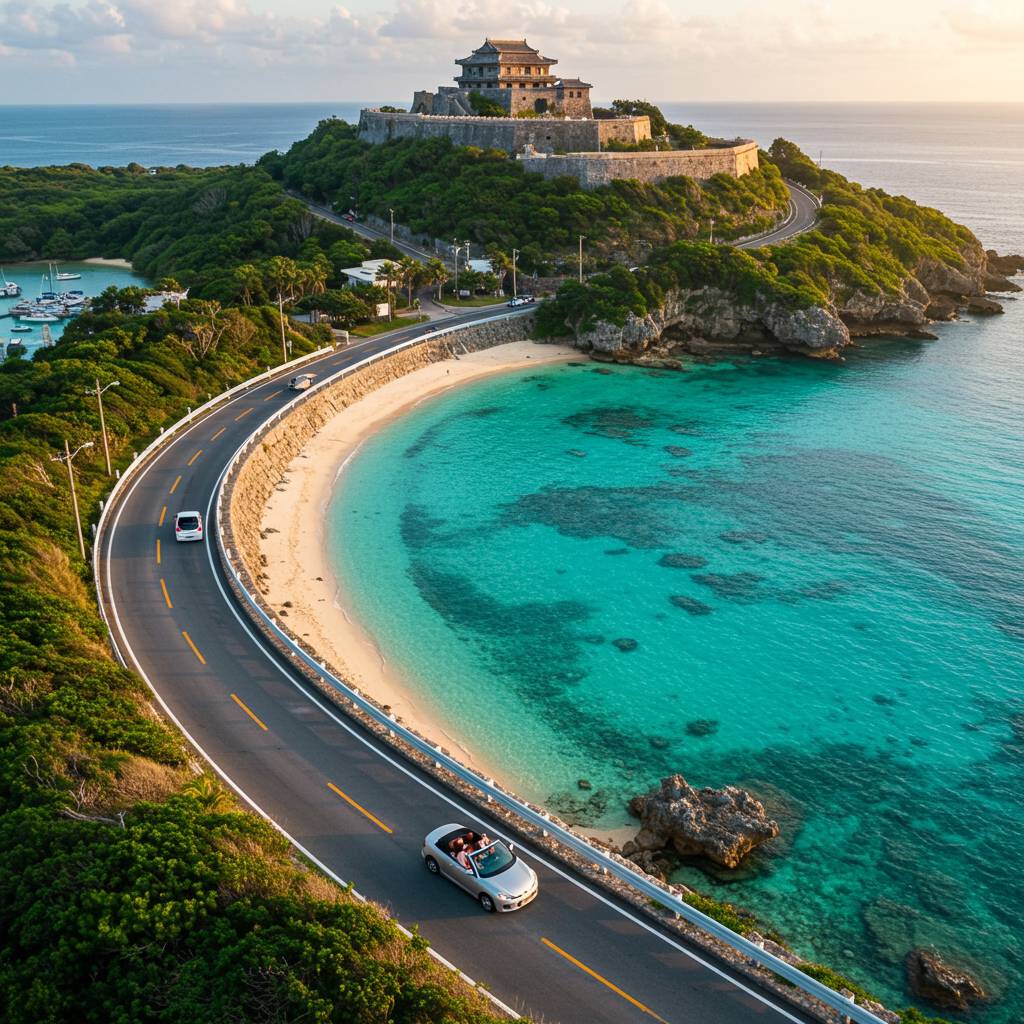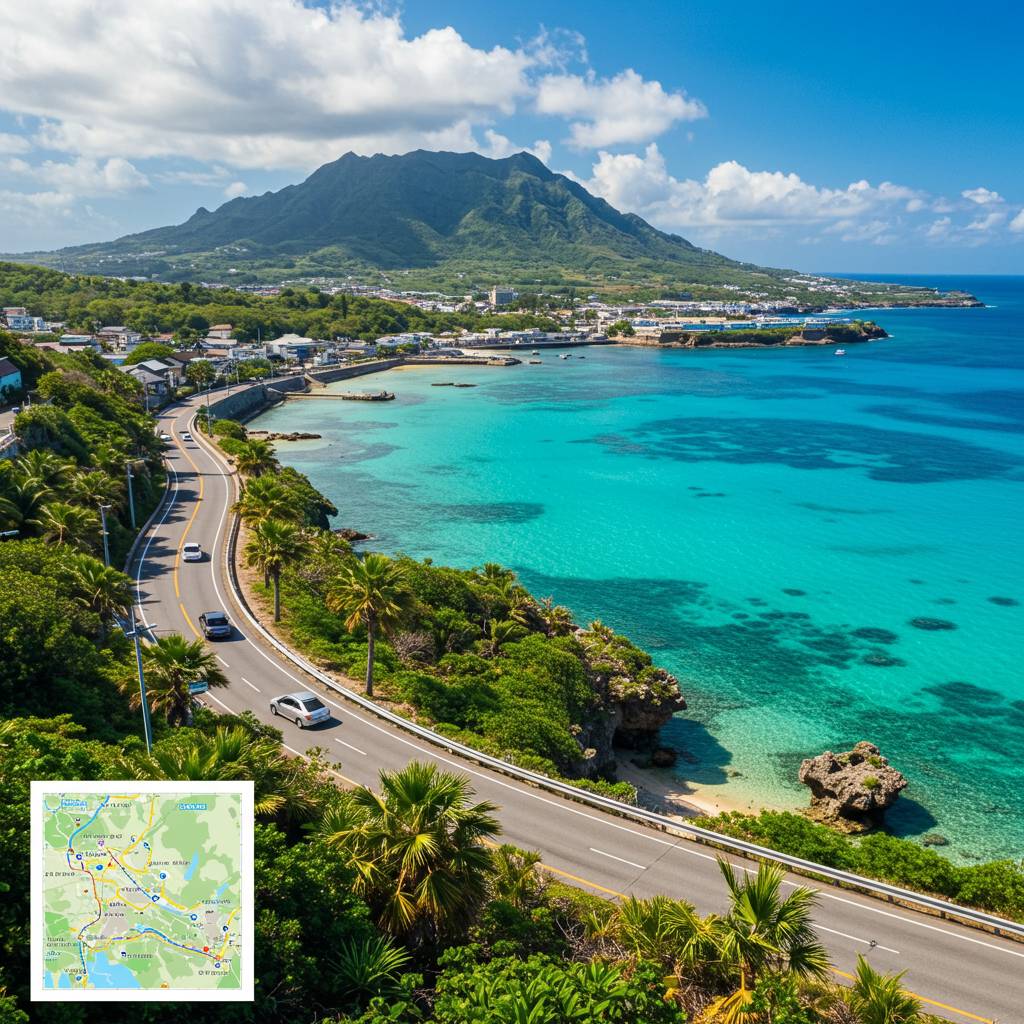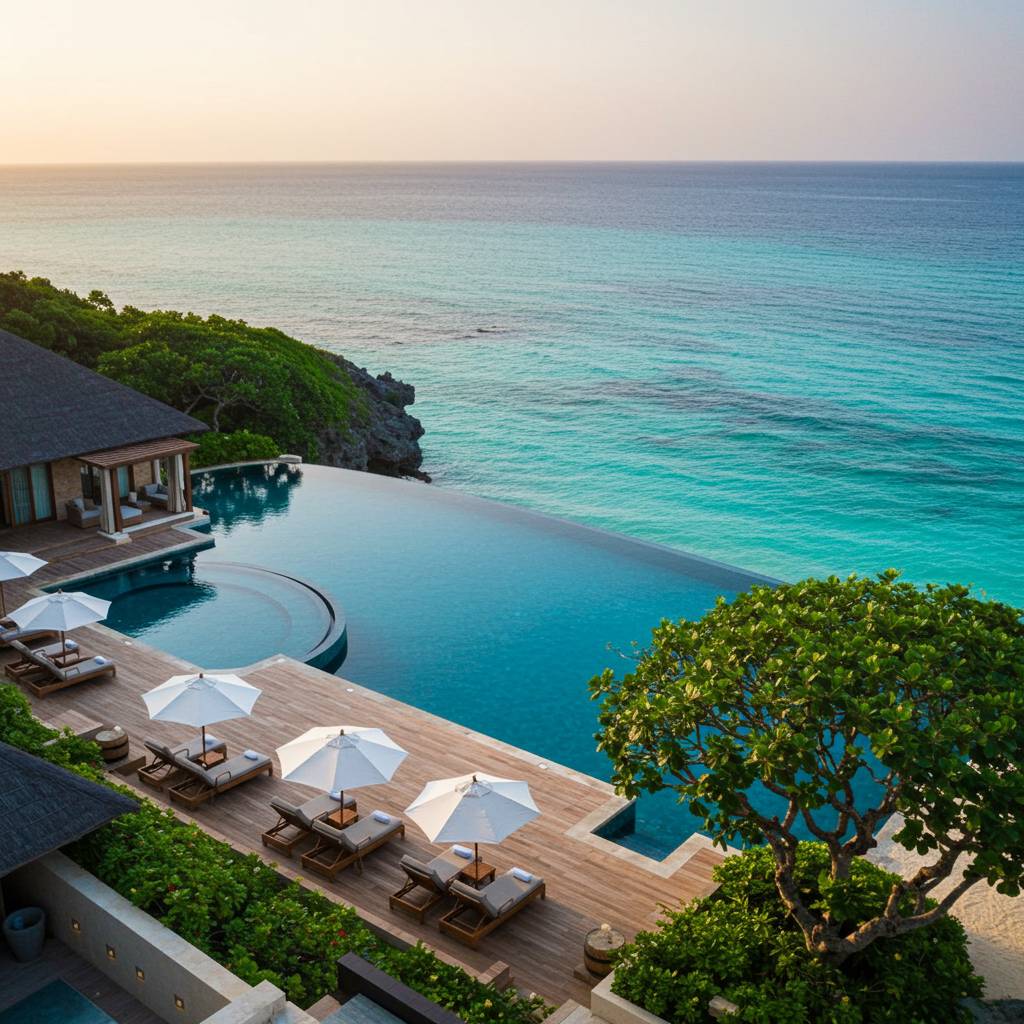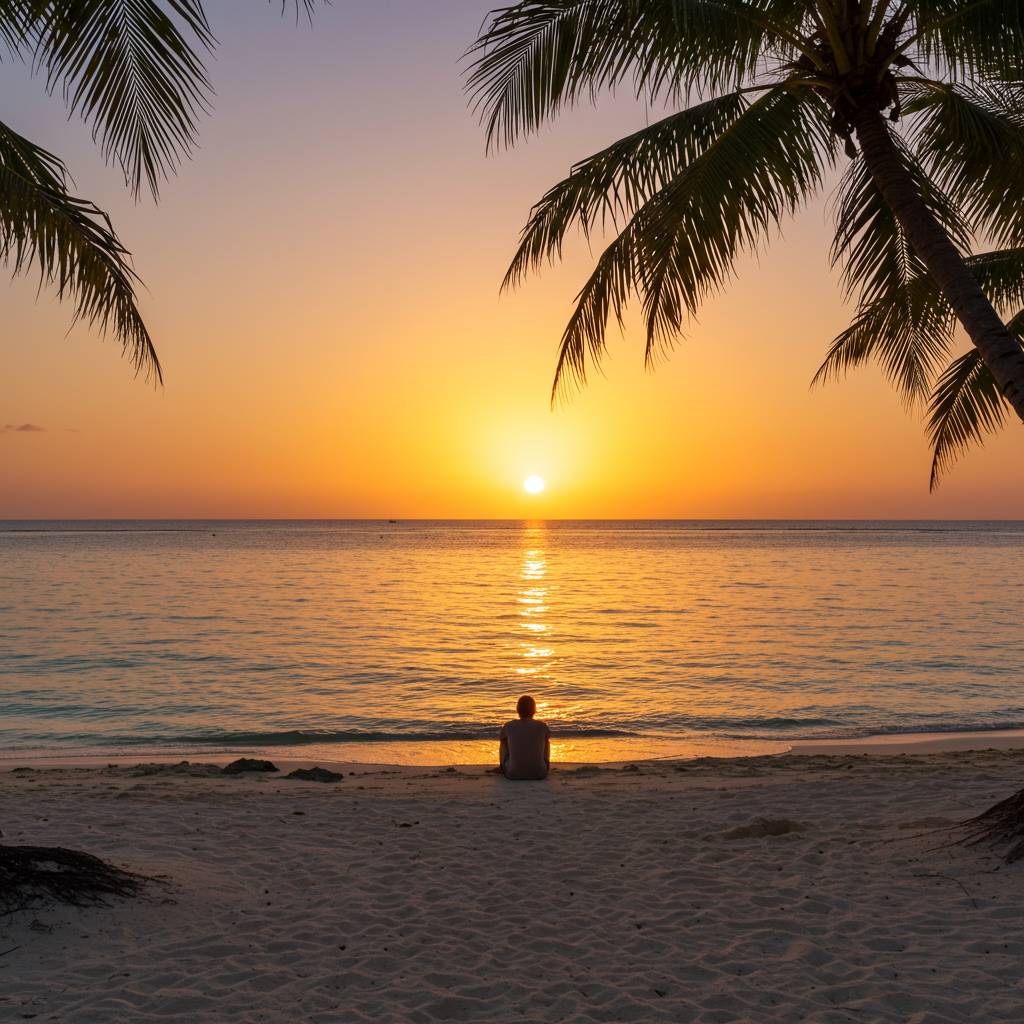Are you dreaming of witnessing breathtaking sunsets while driving along Okinawa’s pristine coastlines? There’s nothing quite like the freedom of exploring this tropical paradise at your own pace, stopping whenever a stunning ocean view catches your eye. While public transportation in Okinawa has its merits, nothing compares to the flexibility and personalized experience that comes with having your own rental car. In this comprehensive guide, I’ll reveal exclusive viewpoints only locals know about, share money-saving strategies that could cut your rental costs by nearly a third, and provide the perfect timing recommendations to ensure you capture those magical golden hour moments along Okinawa’s scenic coastal routes. Whether you’re a photography enthusiast, a nature lover, or simply seeking the ultimate island road trip, this guide will transform your Okinawa adventure into an unforgettable journey of discovery and wonder. Get ready to embark on the perfect Okinawa rental car experience, where sunset drives and ocean views become the highlight of your tropical getaway.
1. 5 Secret Spots in Okinawa Only Accessible by Rental Car
Okinawa’s true magic lies beyond the typical tourist paths, in hidden corners that mainstream travelers rarely discover. While public transportation serves the major attractions well, the island’s most breathtaking secrets remain exclusive to those with the freedom of a rental car. Here are five spectacular locations in Okinawa that reward adventurous drivers with unforgettable experiences.
Cape Hedo (Hedo Misaki) stands as Okinawa’s northernmost point, offering dramatic cliffs and panoramic ocean views that stretch toward the horizon. The winding coastal drive itself becomes part of the experience, with each curve revealing new perspectives of the East China Sea meeting the Pacific Ocean. Sunrise visitors are treated to a spectacular light show as golden rays illuminate the rugged coastline.
Kijoka Ufuya Falls presents a serene alternative to Okinawa’s more famous waterfalls. Tucked away in a lush forest near the village of Kijoka, this multi-tiered cascade requires a short hike from where you’ll park your rental car. The reward is worth every step – crystal-clear pools perfect for a refreshing swim with virtually no crowds to disturb your peace.
Yubu Island’s shallow waters create a unique opportunity to experience traditional Okinawan transportation – water buffalo carts. Park your rental car at the mainland side, then cross the picturesque strait in these charming vehicles. The tiny island showcases tropical botanical gardens with exotic butterflies and vibrant flowers that few tourists ever witness.
Kunigami Forest offers a mystical journey through ancient woodland where massive Okinawan trees create a cathedral-like atmosphere. The forest’s remote northern location means having a rental car is practically essential. Keep watch for the endangered Okinawa woodpecker and Ryukyu robin while exploring well-maintained trails that showcase the island’s remarkable biodiversity.
Okuma Beach represents the epitome of untouched tropical paradise. Unlike the developed southern beaches, this northern gem maintains its pristine condition partly due to its distance from urban centers. The powdery white sand contrasts brilliantly against turquoise waters, while offshore coral gardens provide exceptional snorkeling opportunities accessible only to those who make the journey by car.
Each of these destinations reveals a different facet of Okinawa’s natural splendor, cultural heritage, and tranquil atmosphere – experiences that remain hidden from travelers limited to bus routes and tour schedules. A rental car transforms your Okinawa adventure from a standard vacation into an expedition of discovery, where the journey itself becomes as memorable as the destinations.
2. How to Save 30% on Your Okinawa Rental Car While Maximizing Sunset Views
Savvy travelers know that timing is everything when booking a rental car in Okinawa, especially when you’re planning those magical sunset drives along the coast. Booking your vehicle 3-4 months in advance can secure discounts of up to 30% with major companies like Times Car Rental and OTS Rent-a-Car. These early bird specials are particularly valuable during peak seasons when prices surge and inventory becomes limited. For the best sunset views, request a west-facing pick-up location, allowing you to begin your journey with the setting sun immediately in your sightline.
Membership programs offer another avenue for significant savings. Joining the loyalty programs of OTS or Budget Rent a Car provides immediate 10-15% discounts, free upgrades when available, and expedited pick-up service – giving you more time to position yourself at prime sunset viewing spots like Cape Manzamo or Kouri Bridge. Consider weekday rentals which typically cost 20-25% less than weekend rates, and extend your rental to qualify for long-term discounts that can reduce daily rates by up to 35%.
The vehicle you choose significantly impacts both your budget and sunset viewing experience. Compact cars like the Nissan Note or Toyota Vitz offer excellent fuel efficiency, averaging 20km/L, which translates to substantial savings when circumnavigating the island. However, for unobstructed sunset photography, consider investing in a convertible or a vehicle with a panoramic sunroof. The Toyota Crown with its expansive sunroof offers an excellent middle ground between economy and viewing pleasure. Remember that many rental companies offer hybrid options, which not only reduce your carbon footprint but also decrease fuel costs by approximately 40% – savings you can redirect toward extending your rental period for more sunset adventures.
3. The Ultimate Guide: Timing Your Okinawa Rental Car Route for Perfect Ocean Sunsets
Timing is everything when planning the perfect sunset drive along Okinawa’s picturesque coastlines. The golden hour typically begins about 45-60 minutes before the actual sunset, giving you ample time to position yourself at prime viewing locations. During summer months, sunset occurs around 7:00-7:30 PM, while winter sunsets happen earlier, approximately 5:30-6:00 PM. Check local sunset times before embarking on your journey to ensure you don’t miss nature’s spectacular light show.
The western coast of Okinawa offers the most dramatic sunset views over the East China Sea. Cape Manzamo presents an ideal starting point for your sunset route, with its famous elephant-trunk shaped rock formation silhouetted against the blazing sky. From there, drive south along Route 58, allowing yourself to stop at multiple viewing points. Time your drive to reach Naminoue Beach in Naha about 30 minutes before sunset – the combination of city skyline and ocean horizon creates a magical atmosphere as daylight fades.
For photographers, arrive at your final destination at least one hour before sunset to scout compositions and secure prime positioning. The most vibrant colors often appear 10-15 minutes after the sun dips below the horizon, so don’t rush away immediately after sunset. Popular rental agencies like OTS Rent-a-Car and Times Car Rental offer convenient pickup locations near Naha Airport, making it easy to begin your journey without delay.
Consider a circular route beginning and ending in Naha, driving counterclockwise around the island to maximize daylight. The coastal road near Onna Village provides numerous pull-off areas where you can safely park to appreciate the view. Prepare for your sunset drive by ensuring your rental car has a full tank of gas, as some coastal areas have limited service stations. Navigation apps like Google Maps or dedicated tourist apps for Okinawa can help you locate scenic viewpoints marked by locals.
Weather conditions significantly impact sunset quality. Clear days produce vibrant oranges and reds, while some cloud cover often results in the most dramatic and colorful displays. Check weather forecasts before planning your sunset route, and consider having a backup plan if conditions aren’t ideal. Regardless of the specific weather, the combination of Okinawa’s tropical atmosphere, winding coastal roads, and ocean horizons creates an unforgettable driving experience as day transitions to night.
For rental car reservations in Okinawa, visit “RENT A CAR HIROBA”
Make the best memories of your trip at the rental car plaza!
Click here to reserve a rental car ↓
・Cheap rental cars in Okinawa are at the lowest price starting from 1,500 yen. Rent-a-car Hiroba is recommended for reservations and comparisons.
https://rentacar-hiroba.com/

